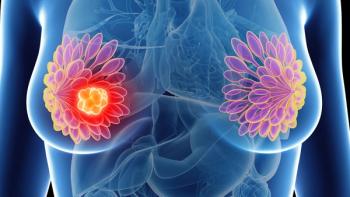
'Undiagnosed Cancer Clinic’ Helps Improve Cancer Care Accessibility
The Undiagnosed Cancer Clinic, or UCC, was established with the goal of reducing the time that patients wait for their initial oncology consultation appointments.
At the Lineberger Comprehensive Cancer Center, a new “Undiagnosed Cancer Clinic” has helped connect patients to care in a timelier fashion. Tammy Triglianos, DNP, ANP-BC, AOCNP, a nurse practitioner, presented on the impact of this clinic during the 2023 ASCO Quality Care Symposium.
The clinic yielded some promising outcomes, according to Triglianos. First, it helped decrease the wait times for patients waiting to receive their oncology consult. It also helped address barriers to care and enhance access for patients with undiagnosed cancers.
“We have strived to address barriers to care access through our navigation team,” she said during the presentation. “Our initial findings show a substantial decrease in wait times for oncology consult visits, enhanced access to care through dedicated appointment slots on provider templates, and potential reductions in repeat emergency department visits for certain patients.”
Addressing Currents Gaps in Care
As Triglianos explained, disease-specific clinical models of academic programs usually require a diagnosis for scheduling. This means that for patients with undiagnosed cancers, there is delay in how quickly they can receive consultation. On average, the wait time at their institution was 17 days (range, 7-49) over a 4-month period (n = 14), prior to this intervention.
The Undiagnosed Cancer Clinic, or UCC, was established with the goal of reducing the time that patients wait for their initial oncology consultation appointments. The team included 2 MDs, 3 APPs, 1 Nurse Navigator, and 1 intake coordinator. Initially, they only offered 2 appointment slots per week, but they have since increased their volume to receive up to 5 appointment slots per week.
Some of the services offered by the UCC include specialty-led diagnostic workups, symptom management, disease education, goals-of-care discussions, early navigation for barrier mitigation, and help with the transition to a subspecialist following the final diagnosis.
Since inception, her team has seen a total of 53 patients, with ages ranging from 37 to 93 years. Most patients have been White (65%) or Black (25%), and 13% had identified as Hispanic.
In terms of referrals, 31% came from a primary care provider, 25% came from the emergency department, and 17% came from an inpatient oncology consultation.
After launching the UCC, the average wait time decreased from 17 days to 5 days. Among those who received a diagnosis, 35% had gastrointestinal cancer, 12% had lymphoma, 8% had breast and genitourinary cancers, respectively, and 37% had other cancers.
“We have expedited diagnostic workup by collaborating with various departments, such as getting an ERCP [endoscopic retrograde cholangiopancreatography] and biopsy for pancreatic cancer diagnosis, mostly happening within 1 to 3 days of our visit,” Triglianos said.
Of note, 79% of patients with solid tumors had metastatic disease at the time of their diagnosis, 15% did not have cancer, and 8% were referred directly to hospice care.
Additionally, 68% of patients had symptoms that required immediate intervention; pain was the most common.
Triglianos shared that 58% of these patients had gone to the emergency department at least once seeking help to manage their symptoms, but only 8% sought care from the emergency department in the interval between their UCC visit and their visit with the established specialty care team.
Patient Impact
Triglianos concluded by sharing some of the instances where her team was able to have a significant impact on their patients. For instance, they were able to engage in a goal-of-care discussion with a 99-year-old woman with pancreatic cancer. After discussing the realities of her disease, she declined further workup with biopsy and additional imaging and, instead, was immediately referred to hospice care.
Another proud moment that she shared was the case of a 57-year-old woman with small-cell lung cancer who came to the clinic. They were able to expedite her treatment, and this individual started her chemotherapy just 3 days after receiving her final pathology results.
The next steps for this program will involve reducing outpatient delays for diagnostic workup and collaborating with primary care providers and emergency departments to further enhance the program.
“We are committed to ongoing collaborations, especially with our primary care partners and emergency department,” she concluded. “We will continue efforts to enhance this program to increase access to care and boost our referrals.”
Reference
Triglianos T, Sorah JD, Cao F, et al. Rapid care transition: Implementation of an undiagnosed cancer clinic. Presented at: ASCO Quality Care Symposium. October 27-28, 2023; Boston, MA.
Newsletter
Knowledge is power. Don’t miss the most recent breakthroughs in cancer care.































































































